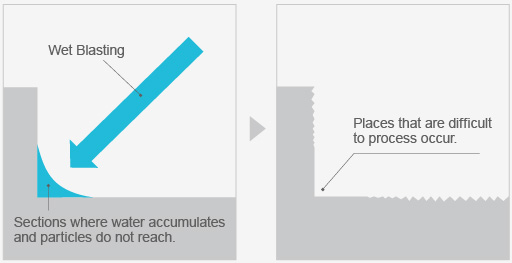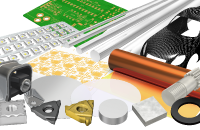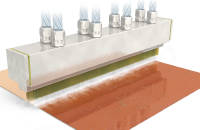Wet Blasting Precautions
Below are some points to keep in mind when using wet blasting.
Compressor is Required
In wet blasting, compressed air is used to accelerate the slurry. So in order to do this, a separate air-compression device or compressor is required.
Equipment with multiple nozzles will require an additional supply of compressed air. Accordingly, you will need to have a compressor with a large output.
Exhaust is Required
The compressed air in the processing chamber of the equipment gradually expands and becomes pressurized. Therefore, it is necessary to use an exhaust fan to actively exhaust the air out of the equipment.
As a countermeasure, Macoho's wet blasting system employs a uniquely developed exhaust cyclone that also functions as a centrifugal separation device.
Rinsing with water is needed
After wet blasting, the surface of the object is covered with liquid, which contains residual abrasives, organics, and oxides.
Therefore, it must be rinsed with water.
Sludge is generated
As a result of hitting the surface of the workpiece, the abrasive material gradually is crushed and breaks down.
This crushed abrasive and scraped off particles/powder (sludge) must be collected and additional abrasive must be added.。
Take notice of the buffer
The buffer is simply a puddle of water. This can be said to be a demerit that occurs due to the use of liquids.
As shown in the figure below, if the workpiece is shaped like a cul-de-sac, the liquid will temporarily accumulate like a pond.
When spraying towards it, energy is attenuated due to the accumulated liquid, and the original processing effect cannot be produced.
To avoid this, it is necessary to consider the position of the workpiece, the angle of the spray nozzle, and the direction of the processing.



